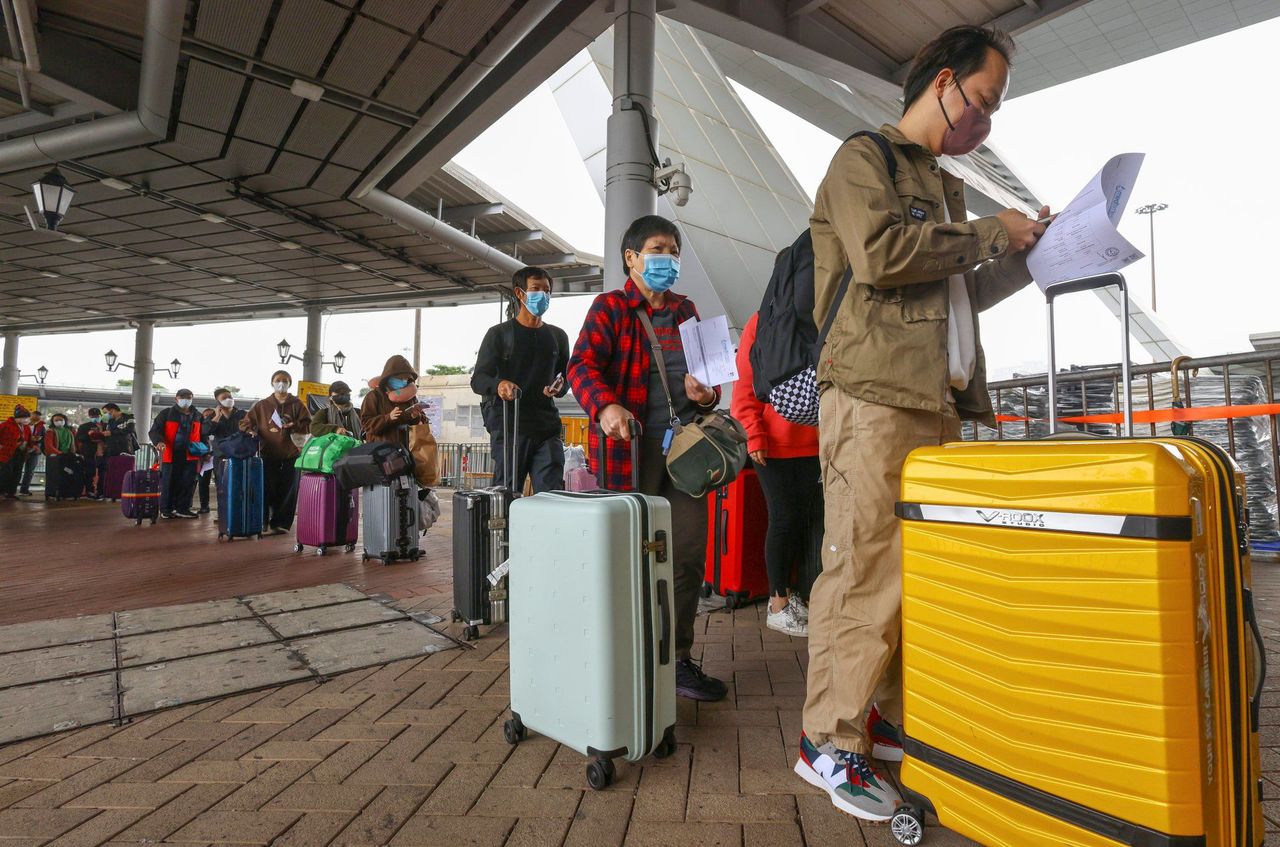Hong Kong News

Hong Kong to send ‘thousands of officers’ to mainland Chinese border checkpoints
Thousands of customs, immigration and police officers will be sent to land checkpoints to manage predicted surge in traffic as the border between Hong Kong and mainland China is expected to fully reopen next month, the Post has learned.
A government source on Thursday said the relevant departments were preparing to test all customs checkpoint clearance systems at the city’s high-speed rail that extends into Guangdong province and along other sections of the border as authorities needed weeks to prepare for the relaxed rules.
Another insider said the city’s rail operator was gearing up to resume the service by performing frequent drills.
“Despite that most of the border checkpoints have been closed, their operations have remained normal during the past three years with staff working there to provide regular security, checks and maintenance,” the insider said.
“For the high-speed rail and other cross-border rail services, there has been a minimum rail service to transport the mainland staff to and from the mainland. To reopen its services, the MTR Corporation only needs to redeploy its staff again for the rail borders.”
Most of Hong Kong’s border checkpoints have been closed since the beginning of the Covid-19 pandemic in early 2020, including those at Lok Ma Chau, Heung Yuen Wai and the West Kowloon high-speed rail terminus.
Under the current restrictions, travellers can enter the mainland from Hong Kong using the city’s airport, as well as the control points at Shenzhen Bay and the Hong Kong-Zhuhai-Macau Bridge.
Sources previously told the Post that the city was set to fully reopen its borders with the mainland and resume the high-speed train service to Guangdong from early next month.
The expected reopening follows the government’s decision to roll back anti-epidemic restrictions, such as easing entry rules for arrivals and no longer relying on the “Leave Home Safe” risk-exposure app, despite a significant increase recently in Hong Kong’s virus caseloads.
Thursday marked the highest number of daily cases since March 18, with health officials reporting 17,080 infections, 831 of which were imported, and 19 additional deaths.
The city’s overall tally stands at 2,307,397 cases and 11,075 related fatalities.
 Under the current restrictions, travellers to the mainland from Hong Kong can only cross the border at three control points.
Under the current restrictions, travellers to the mainland from Hong Kong can only cross the border at three control points.
From Monday, mainland authorities have also allowed cross-border truck drivers to collect and deliver goods directly to destinations there without using the designated checkpoints.
Chief Executive John Lee Ka-chiu recapped the new cross-border policies at a forum on Thursday and pledged to continue working with mainland officials to help with the transit of goods and people.
“The government will continue to maintain close contact with the relevant departments in the mainland to facilitate the movement of personnel and goods in a steady and orderly manner,” he said.
As part of preparations for the full reopening of the border, thousands of officers from the city’s customs, immigration and police services will be redeployed to the major control points after previously taking up other duties during the pandemic, according to the government source.
Among those previously reassigned away from the border were more than 1,200 customs officers currently performing duties such as reinforcing cargo operations at the airport and container terminals, the Post has learned.
A third government source said authorities would conduct refresher training for officers, inspect equipment and test computer systems, as well as carry out disinfection of facilities before reopening the checkpoints.
“As frontline officers have been relocated from their original posts for nearly three years, they are required to undergo training to refresh them and help some new recruiters to get familiar with the working environment,” the insider said.
On the subject of the high-speed rail reopening, an MTR Corp spokeswoman said essential operations and maintenance works had continued during the suspension to prepare for the resumption of services.
The HK$84.4 billion rail link was expected to carry an average daily ridership of 80,100 with its launch in 2018 but only achieved around half the government’s estimate a year later, with the service later suspended in 2020 due to the pandemic.
A source familiar with the plan to fully reopen the border said Beijing was keen to restore travel by early next month to revive both Hong Kong and the mainland’s economies.
He added that the reopening had been planned for a long time but was postponed several times as a result of different circumstances.
“The border reopening has been planned for the middle of this year, and the mainland authorities wanted it to make way for the Chinese Communist Party’s 20th congress in October. But it was postponed again due to the outbreak in Guangzhou,” the source said.
“This time it will be unlikely to have any delays because Beijing has realised the economy for both Hong Kong and the mainland is on the brink of collapse and they really need to rescue the economy which is now on top of their agenda.”
Separately, the MTR Corp is expected to run overnight services on Christmas Eve and New Year’s Eve, which have been suspended since 2020 due to the pandemic.
Hong Kong Railway Employees Union chairman Tam Kin-chiu said the move was subject to government approval but rail staff had already received rosters for both days.











